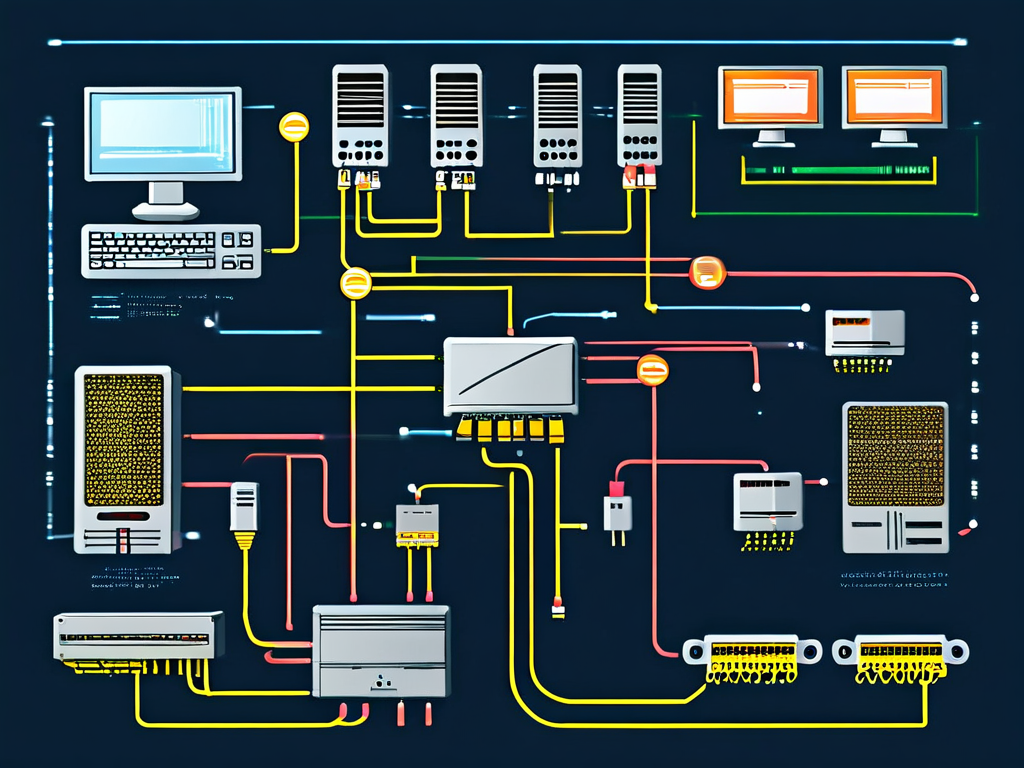In the digital era, computer networking forms the backbone of modern communication systems. Understanding its foundational concepts enables professionals to design, implement, and troubleshoot networks effectively. This article explores core principles of networking technology while emphasizing practical applications.

Network Architecture and Protocols
At the heart of networking lies the Open Systems Interconnection (OSI) model, a seven-layer framework defining data transmission processes. While theoretical, this model underpins real-world protocols like TCP/IP. Transmission Control Protocol (TCP) ensures reliable data delivery through error-checking mechanisms, whereas Internet Protocol (IP) handles logical addressing. For instance, when streaming video, TCP reassembles packets in correct order while IP routes them across interconnected networks.
Modern networks increasingly adopt IPv6 to address the limitations of IPv4, particularly its 32-bit address space. A typical IPv6 address like 2001:0db8:85a3:0000:0000:8a2e:0370:7334 demonstrates expanded capacity, supporting approximately 340 undecillion unique addresses. Transition technologies such as dual-stack configurations allow gradual migration from IPv4 to IPv6 without service disruption.
Switching and Routing Mechanisms
Network switches operate at Layer 2 of the OSI model, using MAC addresses to forward frames within local area networks (LANs). Consider a corporate office with multiple departments: switches create collision domains per port, preventing data collisions between devices. Advanced features like VLAN segmentation enable logical grouping of devices regardless of physical location, enhancing security and traffic management.
Routers function at Layer 3, utilizing IP addresses to direct packets between networks. Routing protocols like OSPF (Open Shortest Path First) and BGP (Border Gateway Protocol) determine optimal paths dynamically. For example, an e-commerce company might use BGP to maintain reliable connectivity across geographically distributed data centers, automatically rerouting traffic during fiber cuts.
Network Security Essentials
Firewalls implement access control policies through stateful inspection, monitoring connection states rather than individual packets. A next-generation firewall might integrate intrusion prevention systems (IPS) to block malicious payloads in real-time. Encryption protocols like TLS 1.3 secure data in transit, with handshake processes establishing secure channels in under 100 milliseconds.
Virtual Private Networks (VPNs) leverage tunneling protocols such as IPsec to create encrypted connections over public infrastructure. Remote workers accessing company resources through an L2TP/IPsec VPN demonstrate this technology's practical value, ensuring confidentiality even when using untrusted networks.
Emerging Trends and Challenges
Software-Defined Networking (SDN) decouples control and data planes, enabling centralized network management through controllers like OpenDaylight. This architecture supports dynamic traffic engineering, crucial for cloud service providers handling unpredictable workloads. Network Function Virtualization (NFV) replaces dedicated hardware with software instances, reducing costs and increasing scalability.
The proliferation of IoT devices introduces unique challenges, including massive device authentication and low-latency requirements. 5G networks address these through network slicing, creating virtualized sub-networks tailored for specific applications. A smart factory might utilize ultra-reliable low-latency communication (URLLC) slices for robotic control systems while employing massive machine-type communication (mMTC) slices for sensor networks.
Practical Implementation Considerations
Network administrators must balance performance, security, and cost. Quality of Service (QoS) mechanisms prioritize critical traffic – voice over IP (VoIP) packets might receive higher priority than email transfers in enterprise networks. Redundancy designs incorporating Spanning Tree Protocol (STP) prevent switching loops while maintaining backup paths.
Troubleshooting methodologies often follow layered approaches. Packet analyzers like Wireshark capture and decode network traffic, revealing issues ranging from misconfigured DHCP servers to DNS resolution failures. A common troubleshooting scenario involves analyzing ARP tables to resolve IP-MAC address mismatches in local networks.
As networking technologies evolve, professionals must stay updated through certifications like CCNA and CompTIA Network+. Hands-on labs using tools like Cisco Packet Tracer or GNS3 provide invaluable experience in simulating complex network topologies. Ultimately, mastering these fundamentals empowers technologists to build resilient, secure, and high-performance networks that drive digital transformation.






